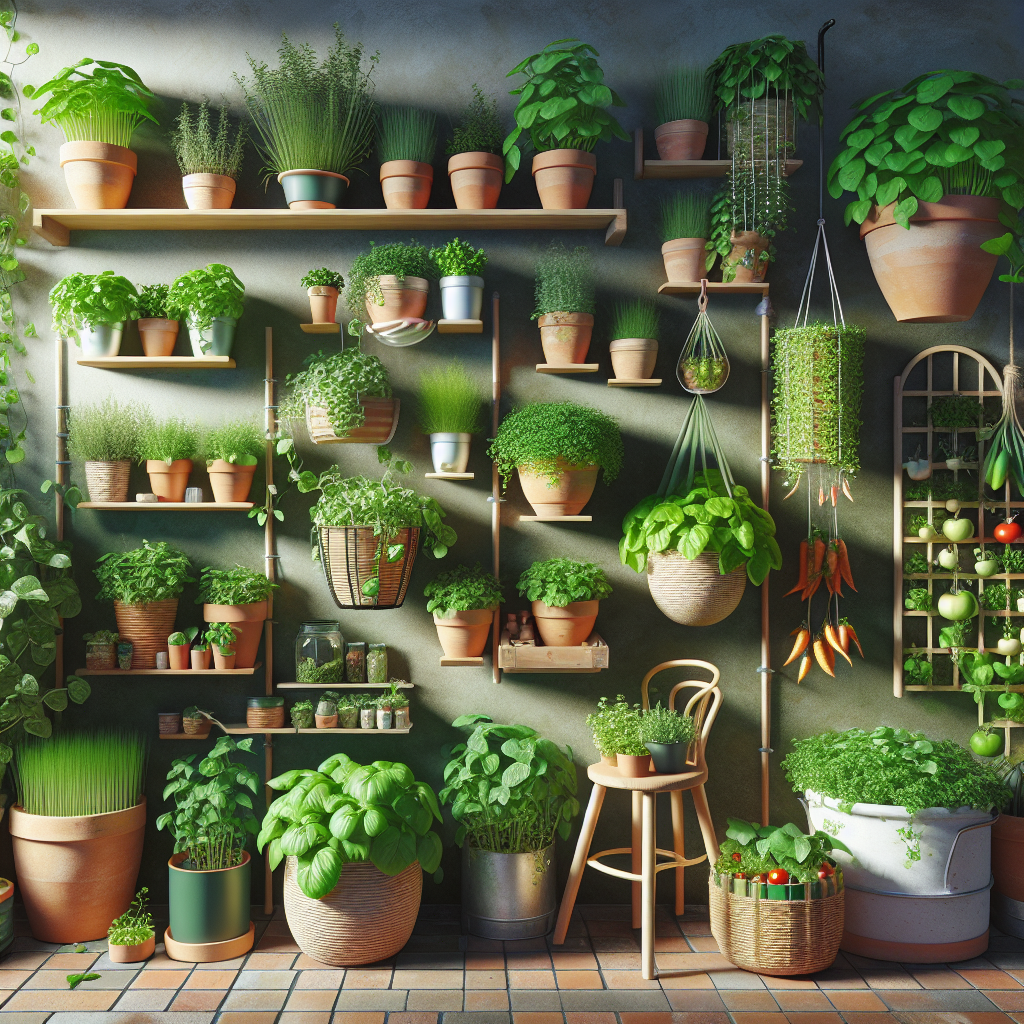Many people dream of having their own little garden, but limited space can make this seem impossible. However, with the right strategies and a little creativity, it is entirely possible to grow edible plants in pots, even in the smallest of spaces. Whether you have a balcony, a tiny patio, or just a sunny windowsill, there are plenty of options for turning your small space into a thriving mini garden full of fresh herbs, fruits, and vegetables.
In this article, we will explore some effective strategies for enhancing small spaces by growing edible plants in pots. From choosing the right containers and soil to selecting the best plants for your environment, we will cover everything you need to know to successfully grow your own food in limited space. So roll up your sleeves and get ready to green up your living space with some fresh produce!
**Choosing the Right Containers**
One of the most important factors to consider when growing edible plants in pots is choosing the right containers. The size and material of the container can have a significant impact on the health and growth of your plants.
When selecting pots for your edible plants, opt for containers that are at least 12 inches deep to provide enough room for root growth. Plastic, ceramic, or terracotta pots are popular choices as they are lightweight, affordable, and come in various sizes and colors. Make sure that the pots have drainage holes at the bottom to prevent waterlogging, which can lead to root rot.
**Selecting the Best Soil**
The type of soil you use is crucial for the success of your potted plants. Look for a high-quality potting mix that is well-draining and nutrient-rich. Avoid using garden soil as it may compact in containers and hinder root growth.
For container gardening, consider using a mix specifically formulated for potted plants that contains ingredients such as peat moss, perlite, or vermiculite. These additives improve water retention and aeration while providing essential nutrients for healthy plant growth.
**Choosing Suitable Plants**
When it comes to growing edible plants in pots, choose varieties that are well-suited for container gardening and have compact growth habits. Herbs like basil, mint, parsley, chives, and thyme are excellent choices as they thrive in pots and can be easily harvested for use in cooking.
Vegetables such as tomatoes, peppers, lettuce, radishes, and dwarf beans also do well in containers. When selecting plants, consider their sunlight requirements and ensure that your small space receives adequate light throughout the day.
**Caring for Your Potted Plants**
Proper care is essential for maintaining healthy edible plants in pots. Water your container garden regularly but avoid overwatering as it can lead to root rot. Check the moisture level by inserting your finger into the soil; if it feels dry an inch below the surface, it’s time to water.
Fertilize your potted plants every few weeks with a balanced liquid fertilizer to provide them with essential nutrients for strong growth. Prune herbs regularly to encourage new growth and prevent them from becoming leggy or overcrowded.
**Harvesting Your Edible Plants**
One of the most rewarding aspects of growing edible plants in pots is harvesting fresh produce right from your own home. Herbs can be snipped as needed for use in cooking or preserved by drying or freezing.
Vegetables like tomatoes and peppers should be picked when they reach peak ripeness for best flavor and texture. Regular harvesting encourages continued production throughout the growing season so don’t be afraid to pluck those ripe fruits and veggies when they’re ready!
**FAQs**
1. Can I grow fruit trees in pots?
– Yes! Many dwarf fruit tree varieties can thrive in containers on patios or balconies.
2. How often should I fertilize my potted plants?
– Fertilize every 2-4 weeks during the growing season with a balanced liquid fertilizer.
3. Can I reuse potting soil from year to year?
– It’s best practice to refresh potting soil yearly by adding compost or replacing some of it.
4 .What if my potted plant isn’t getting enough sunlight?
– Consider supplementing natural light with grow lights or relocating your plant to a sunnier spot.
5 .How do I prevent pests from damaging my potted plants?
– Keep an eye out for common pests like aphids or spider mites; treat infestations early with insecticidal soap or neem oil spray.
In conclusion,growing edible plants in pots is not only possible but also highly rewarding even within limited spaces.Take advantage of these strategies mentioned above,and transform any small area into a thriving mini-garden full of fresh herbs,nutritious fruits,and vibrant vegetables.So why not start today,get creative with container gardening,and enjoy an abundance of homegrown produce all year round!













